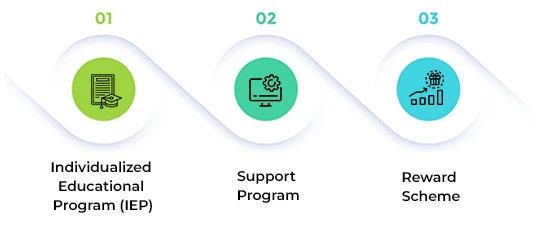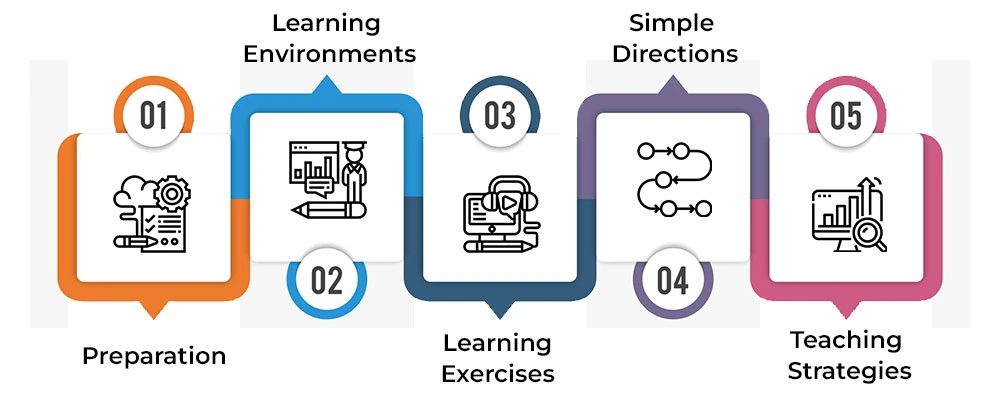Updated , 1 May 2023
Everyone in the classroom strives to study at the same pace as the others, but this is typically not the case. Remedial instruction is used with students who are falling behind in class. This method exists to encourage and help the learner, preventing them from falling behind and from developing a "failure" mindset. Remedial education and classes are essential in today's educational system for assisting students in closing the gaps in their knowledge and achieving academic achievement.
What is Remedial Teaching?
Students who face difficulty grasping topics in a classroom are given different educational strategies like refined practice, repetition of content, and clarification. Whereas, in some cases, individual attention is provided so that the topic is easily picked up by the student. Remedial educators use the necessary instructional techniques to help students overcome any learning obstacles and achieve their full potential. The majority of these remedial programs are done in junior high and high school, where the student is first exposed to the fundamental ideas of education.
A remedial educator can assist the students by teaching the fundamentals of reading, written language, math, and study/organizational skills using innovative, multisensory approaches and practices. It has been demonstrated that using these strategies can improve student learning. If they are taught using such plans and techniques, students are taught to make use of their strengths, talents, and abilities while also overcoming their weaknesses.
Why are Remedial Classes and Remedial Education Important?
Remedial classes and remedial education are important because they provide students with the support they need to succeed academically. Students who are struggling with a particular subject or skill may feel discouraged and overwhelmed, which can lead to a lack of motivation and a decrease in student performance. Remedial classes provide these students with the resources they need to overcome these obstacles and achieve academic success.
In addition, remedial education helps to close the achievement gap between students from different socioeconomic backgrounds. Students from low-income families and underprivileged communities often lack access to the same educational resources as their more affluent peers. Remedial classes improve student management and provide these students with the extra support they need to succeed academically, regardless of their socioeconomic background.
What are the Key Objectives of Remedial Education?
- To support students who are performing poorly in comparison to their peers.
- A teacher provides learning activities and practical experiences to students depending on their skills and requirements, using the curriculum and teaching techniques used in the school.
- Instructors should have professional training in order to assist students in developing general abilities like collaboration, problem-solving, student management, communication, self-learning, self-management, imagination, critical thinking, and information technology use.
- To help students consolidate their foundational knowledge in a variety of courses, master learning processes, build their confidence, and improve their learning efficacy, teachers also develop tailored instructional courses with intensive remedial support.
- Remedial education helps students develop positive attitudes and values, establishes the foundation for lifelong learning, and gets them ready for further education and the workforce.
Identifying Learning Difficulties
Remedial instruction begins by identifying the student's learning obstacles. Following the identification of these problems, the instructor must implement remedial instruction while keeping these problems in mind. The challenges include:
- Low level of comprehension
- Poor memorization potential
- Failure to understand instructions and implement them
- Lack of motivation towards learning
- Need additional time to complete certain task(s)
- Inability to understand complex concepts
- Difficulties in problem-solving
- Low self-assurance with minimum self-expectations
Key Strategies in Remedial Teaching

Individualized Educational Program (IEP):
In order to fulfill each student's unique learning needs, the Individualized Educational Program (IEP) aims to reinforce the foundation of learning, help individuals overcome their learning obstacles, and maximize their potential. Remedial Reading Methods, Encouraging Daily Reading, Concentrating on Comprehension, and Fun and Games are some examples of remedial teaching strategies.
The IEP should include short- and long-term instructional goals, learning steps, exercises, and evaluations to ensure that the curriculum is implemented. To continually improve their work, teachers must evaluate its success and look for student feedback.
Support Program:
Teachers can prepare students who excel in a specific subject to serve as "little teachers" who support peers with learning difficulties in class, outside of class, and during group teaching and self-study sessions. Peer assistance programs help students to strengthen their subject matter knowledge, build their communication and teamwork abilities, and foster a favorable social environment.
Reward Scheme:
Instructors must implement a reward system that encourages students to create their own objectives and plans while also praising them for achieving high academic standards. When creating incentives, teachers must take into account the following elements:
- Set definite, specific goals.
- Establish attainable objectives.
- To suit the interests of the students, offer a range of incentives and give out rewards straight away. Regularly review and update the incentive scheme.
- It is a good idea to ask parents and guardians to help kids with their homework.
What to Look for in a Remedial Program?
When evaluating remedial programmes for the student, keep in mind that not all of them are effective. Effective remedial measures include:
- Tried-and-true teaching techniques that are based on evidence.
- At the student's pace, step-by-step guidance should be given without skipping any content.
- To aid students in remembering what they have learned and practicing what they have learned, regularly assess their progress and provide quizzes.
- Have a system in place for assessing the student's experiences and determining whether or not he/she is prepared to proceed.
- Teach a student the material in a different method than how he was taught it the first time.
- To promote greater individual focus, offer guidance in small groups.
In a productive remedial programme, a qualified instructor with specialized expertise is in charge of the instruction. This is important for all children, including those with learning and cognitive disabilities. Make sure to ask the school if the instructor overseeing your child's remedial programme has undergone this training.
How to Handle a Student's Behavioral Issues?
Teachers should keep the following in mind while handling difficulties with student behavior:
- Always monitor students' academic progress and group behavior.
- Help children understand how their actions affect both themselves and other people.
- Create a close connection with students, foster trust between you both, and pay attention to what they have to say.
- Help kids create a positive self-image and sense of self-worth.
- Be in close contact with parents to find out what's causing their kids' behavioral problems.
- Students who conduct themselves properly should receive encouragement.
- Refer the students to counselors or teachers for additional help if their conduct problems continue or get worse.
How to Design a Remedial Teaching Program?
It has been noted that not all remedial education approaches are effective in assisting a student. These guidelines can be considered when creating a programme:
- Use tried-and-true teaching strategies that have produced results in the past. Adhere to a step-by-step plan without skipping any information and make adjustments for the student's learning pace.
- Create a system for thoroughly evaluating students so that you can decide whether to continue with the following lesson or not.
- Add exams and practice exercises to aid students in remembering what they have learned.
- Instructions should be given in small groups when it is possible to give individual guidance.
- Make a variety of instructional strategies available in case the learner does not absorb the material the first time.
Guidelines for Effective Remedial Teaching Programs:
In remedial programmes, the role of the teacher is vital, and it has been noted that these ideas can act as guiding principles for creating effective remedial programmes. Let's begin:

- Preparation:
- Learning Environments:
- Learning Exercises:
- Simple Directions:
- Teaching Strategies:
Prior to creating the lessons, enough emphasis must be placed on determining the various learning needs of each student. This will allow for the creation of teaching strategies that will maximize student learning.
It is wise to design enjoyable learning environments in the form of games and to adopt a more informal style of education. This encourages initiative and sparks enthusiasm for studying.
To help students develop their latent learning capacities and problem-solving skills, remedial educators should provide a sufficient number of learning exercises. Instead of one lengthy educational exercise, it would be ideal to design a series of them.
The written language presents difficulties for students with learning disabilities. So, in order to prevent ambiguity and confusion, teachers must provide clear and straightforward directions.
Introduce abstract ideas after some specific examples. Create straightforward, uncomplicated steps, and move at the student's pace. The use of teaching aids, as well as the assistance of information technology and other educational resources, is encouraged.
Also, remedial education is important as a way to close learning gaps, according to the National Education Policy (NEP) 2020. To assist students who are struggling in reading and math, the NEP proposes implementing remedial education programs. These programmes will guarantee that no student is ever left behind and that everyone has an equal chance of succeeding in school.
National Education Policy 2020: All You Need To Know About NEP 2020 For Schools
Moreover, incorporating remedial education into hybrid learning environments can provide struggling students with the extra support and resources they need to succeed academically, regardless of the mode of instruction. By leveraging the power of a learning management system, remedial education can offer targeted support, individualized learning paths, real-time progress monitoring, and enhance the learning experience for struggling students.
Final Thoughts,
Remedial classes play a crucial role in helping students overcome academic challenges and achieve success. In order to prevent students from falling permanently behind in their academics, remedial teaching should be implemented immediately. Students that need remedial education may never have issues in the first place.
By improving student performance, boosting confidence and self-esteem, and preparing students for college and the workforce, remedial classes can have a lasting impact on a student's life. These programs can make a significant difference in a student's academic journey and help them reach their full potential.
The Fastest, Easiest, and Most Reliable Educational ERP System to Meet the Needs of Your Institution
Mobile: 08448010216
Email: janki.somani@iitms.co.in












